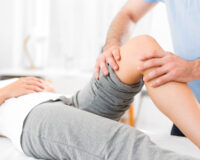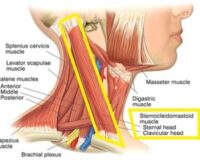The Dangers of W-sitting for Children
What is W-sitting?
W-sitting is a form of sitting, usually performed by infants and toddlers, whereby they are seated on their bottom with their legs bent outwards to either side of their body. In other words, they “sit between their legs”, creating the letter “W”.
In terms of the lower limbs, it is the opposite position to sitting cross-legged; the child’s legs are rotated inwards, while the feet are held in an everted position.
Sitting cross-legged, or straight-legged for younger children, is considered normal, while W-sitting is not considered normal and is usually a sign of an underlying issue.
Why do young children sit like this?
When young children learn to sit up, a whole new and exciting world opens up to them; a world filled with toys and play – and the ability to use both hands. Plus, they get to see the world from a different, upright angle. It’s no wonder that children are keen to get into this position as soon as possible, and why they enjoy it so much once they master this skill!
With appropriate trunk/core strength and muscle tone (this is the continuous and partial contraction of muscles at rest), infants and toddlers can maintain their seated posture and continue to focus their attention on play and exploration.
In children with low muscle tone (low resting muscle contraction) and joint hypermobility (increased joint mobility – sometimes incorrectly referred to as “double jointed”), sitting is a lot more difficult as the core muscles have to work a lot harder. They are at risk of falling out of the seated position because their muscles are not able to support them easily. These children still want to be able to sit upright and enjoy all the benefits of that position, and so often develop different ways to do that. Sitting with their legs bent outwards helps to lock the hips and support the pelvis and trunk and thus keep them upright as the core muscles do not need to control as many areas.
A cautious note…
Low muscle tone and joint hypermobility are often a sign of something bigger. There may be a problem with the nervous or muscular systems (which will usually be detected at birth or during infancy), such as cerebral palsy, brain damage due to lack of oxygen, and muscular dystrophy. There can also be genetic causes that lead to low tone and therefore W-sitting, including Down Syndrome. If you have any concerns, your GP or Paediatrician are the best people to investigate these signs further.
What problems can it cause, and is it such a bad thing?
W-sitting in the short term is not a problem, and if your child is able to move into and out of this position on their own without falling over, there is no big reason to be alarmed.
It does become a problem however when it is the only method of sitting, and there are a few different issues it can create. While sitting in this way, the child is unable to twist to the sides to play with toys (as they are locked at the hips), and so it limits the amount of movement the spine does and can therefore affect the way the spine and surrounding muscles develop.
Due to the extreme angle that the lower limbs are placed in, over time the hip joint will develop a large range of internal rotation and a restriction in external rotation, and will develop muscle imbalances as a result. This means that different muscles involved with these movements around the hips will become tight (the internal rotators), or lengthened and weak (the external rotators). This in turn will make future movements, such as balancing, walking, running and sports, more difficult. (The external rotator muscles include the gluteals, and are a very important muscle group involved in keeping upright balance in standing, and one of the main muscle groups that propel us forwards with walking and running). You may also notice the child walks pigeon-toed (a big sign that the gluteals are weak), or on their toes (another sign of low muscle tone).
In addition, because of the angle around the knees and shins, tibial torsion (or twisting of the tibia) can occur to the shin bone as it is growing, along with loosening of the ligaments that hold the knee joint together. This may cause knee pain and go on to prevent the child from being as active as they’d like to be.
What can I do to stop it?
In the early stages, one of the most important treatments for W-sitting is to make the infant aware of their sitting, and correct them whenever you can. Trying to get them to stay in a better position for as long as possible, while distracting them with lots of fun and play at the same time, will be very helpful. They will likely need a lot of 1:1 attention for this transition, but with lots of practice they should be able to make changes within 2 months (or earlier).
Bear in mind that it is much easier to make the changes as soon as you notice problems (I.e. when your child is just learning to sit), before the poor positions become a habit and too comfortable, and start causing too many problems! It may take a lot of time and concentration, but will certainly help them in the long term.
How can my Physiotherapist help?
If the child is older with a long history of W-sitting there will likely be more muscle imbalances and potentially poor habits formed, and therefore more areas that require treatment. Treatment will be on a case-by-case basis, and will depend on the specific findings of a thorough assessment by a physiotherapist.
In order for treatment to be successful this will need a structured program, which may include:
- Stretching tight muscles (often the hamstrings, ITB and hip internal rotators),
- Strengthening weakened muscles (often the gluteals and hip external rotators)
- Restoring the correct mobility and function around the hip joint
- Improving core strength and balance
- Integrating the improvements in strength/length and function of the different muscle groups into normal activities, such as walking, running and sports.Following a detailed assessment, your physiotherapist will be able to implement a program designed to target all the necessary areas to ensure a full return of function and movement to the required areas.
And finally…
Please remember, if you are at all concerned with your child’s sitting or motor development, please discuss this with your GP or Paediatrician. Alternately, please feel free to contact call us at Therapia Physiotherapy and Pilates on 8221 5011, or email us at info@therapia.com.au if you have any further queries, or you would like to know more about the assessment process and treatments.
Book Appointment


